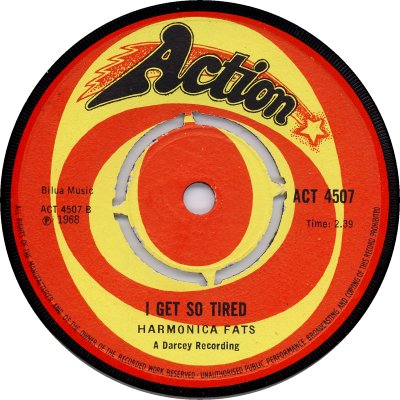
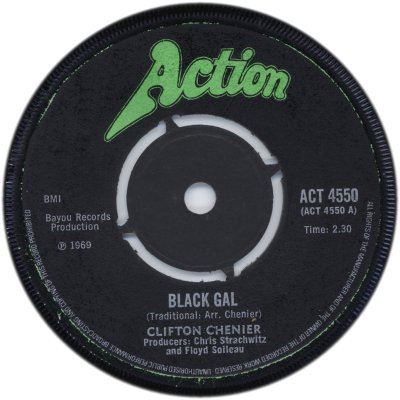
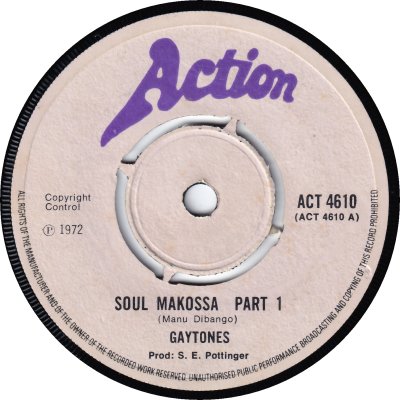
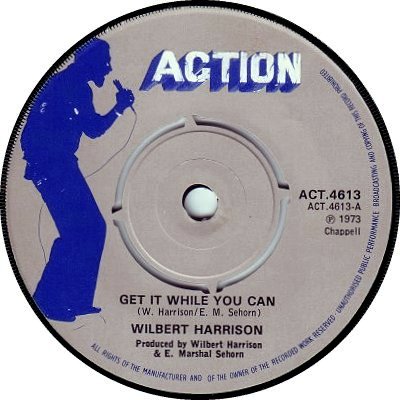
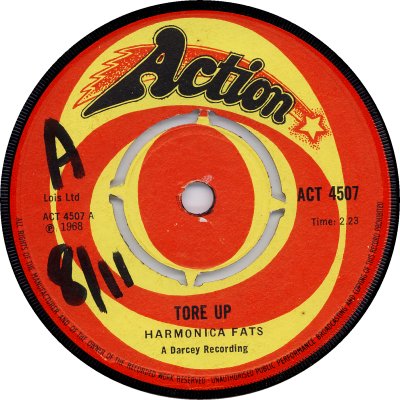
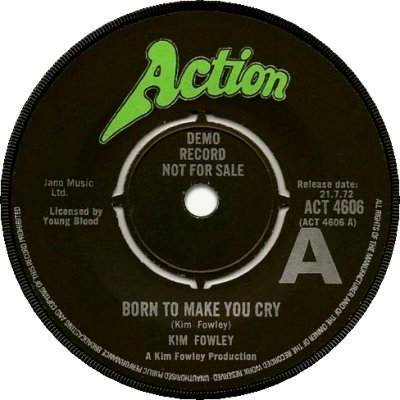
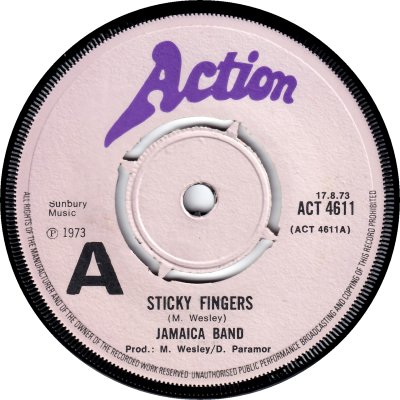
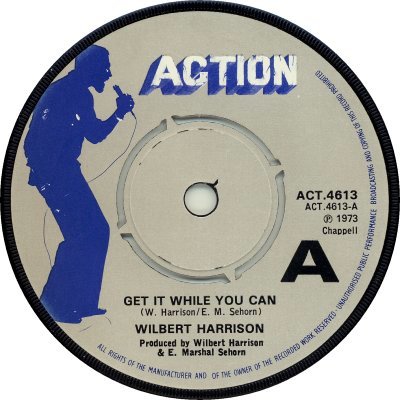
A Soul / R&B label, started in the autumn of 1968 by John Abbey in association with Island / B&C and thus more or less a successor to Island's 'Sue' label, which put out its final single in June of that year. Action received its first mention in the Trade press in 'Record Retailer' of the 11th of September 1968, which observed that Abbey, who at the time was the editor of 'Blues & Soul' magazine, had launched it in association with Jim Flynn. It was operating out of Music House, in Neasden, which was the shared headquarters of Island and Trojan, with Philips and Island handling distribution. A subsidiary Rock label, Stable, was in prospect - it duly arrived, but it disappeared before the end of 1969 and is therefore beyond the scope of this site. 'RR' of the 22nd of January 1969 reported that Action was planning to launch another label, 'Big Wheel', for Country music, the first releases being an album and single by Merrill E. Moore. Big Wheel never saw the light of day, but the Moore records formed the first issues on the B&C label when it was launched in May of that year.
Staring in September 1968 Action issued some fifty-five singles, numbering them in an ACT-4500 series. All were licensed from American companies. After March 1970, by which time numbers had reached ACT-4557, the label appears to have been shelved. Abbey's interests were widening - the following couple of years were to see him being recruited to source records for Mojo, Stax and Atlantic and launching the Contempo label (q.v. all) - so it may be that he had lost interest in Action. In the autumn of 1971, however, 'RR' of the 2nd of October broke the news that B&C was reviving the label, both for old and new product. This time around, numbers were to be in the ACT-4600s. The revival seems to have only lasted for eight months or so, for after the release of ACT-4606 in July 1972 there was another gap, this time one of around ten months. Action singles started to appear again in May 1973, and the label was given a boost when Webster Shrowder was appointed by B&C / Trojan to run it and the company's new Soul label, People ('Music Week', 28th July 1973). Again, however, the revival proved short-lived, and Action put out its final Soul single in April 1974, leaving People as B&C's sole Soul / Dance outlet. That wasn't quite the end: Action was reborn in May 1975, this time as a Roots Reggae label, with singles numbered in an ACT-100 series, but it only ran to three releases before B&C hit what turned out to be terminal financial problems. Saga bought B&C's assets in the autumn of 1975 and relaunched the B&C, Trojan, Attack, Horse and Mooncrest labels (q.v. all), but it left Action permanently on the shelf. 'MW' of the 31st of January 1976 confirmed that the label was being phased out by its new owners.
Action went through four labels during the seven years of its existence. An eye-catching swirly red-and-yellow design (1) served until October 1969; from ACT-4550 onwards singles were given new black labels and a green logo (2), which lent them a distinctly 'B&C family' look. The same label was used during the 1971-72 revival and for the first couple of singles following the revival of May 1973, but in June 1973 the colour scheme was altered to pinky-white with a purple logo (3). The white labels lasted for only four issues, as from October 1973 the design was changed: it was given new colours and a picture of a vocalist, and it became more 'hip' looking (4). Finally, both the white and the 'hip' labels were used for Action in its Reggae incarnation, the 'hip' ones being the commoner of the two. 'Swirl' singles don't generally seem to have been given demo markings consistently until ACT-4522, in February 1969, at which point they began to have a large hollow 'A' hand-stamped on them, but ACT-4513 had the 'A' printed properly, in silver - it's possible that the marker-pen date and 'A' on the fifth scan above indicate a demo copy of one of the earlier singles, but I haven't seen any others marked in that way. Black-labelled singles don't seem to have had any demo markings until February 1972, when a small solid silver 'A' and the release date began to be added, sometimes in association with the appropriate text (6). The small 'A' continued with the pinky-white and the 'hip' labels, only in black, but the text disappeared on the former from July 1973 (7) followed by the date on the latter (8). For four months from October 1973 demos were pressed specially, and had the 'A' side on both sides - this was standard B&C practice at the time.
Pressing was generally done by EMI or Orlake. EMI pressings had smooth labels with narrow dinking perforations, while Orlakes were rougher, with a narrow smooth outer rim and wider perforations. The difference can be seen in the scans shown above: the first three are Orlakes, the rest are EMIs. Distribution was initially through Island and Philips / Phonodisc, but 'RR' of the 29th of August 1970 said that B&C was turning to EMI for both manufacture and distribution. Island continued to share the job of distribution until the 1st of July 1972 ('MW', 1st July).
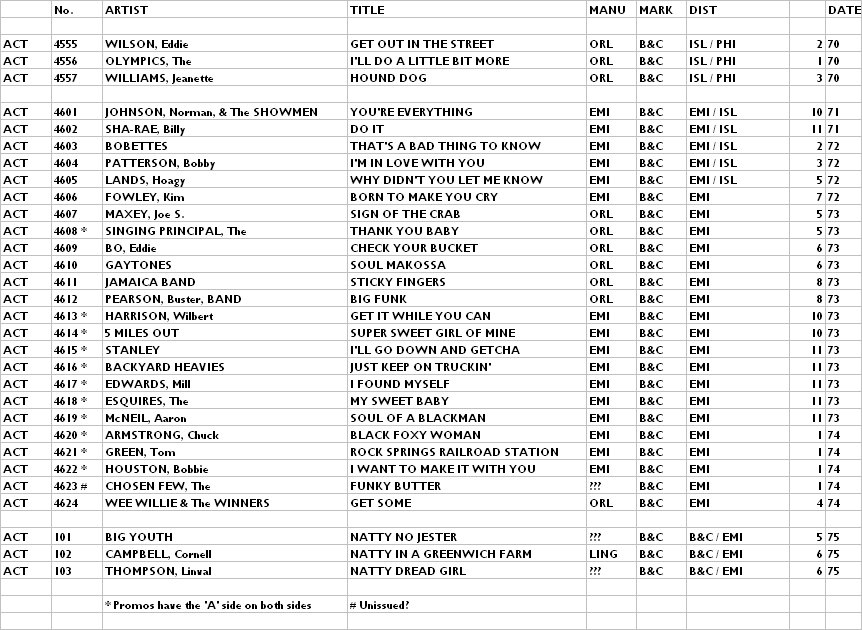


Copyright 2008 Robert Lyons.

